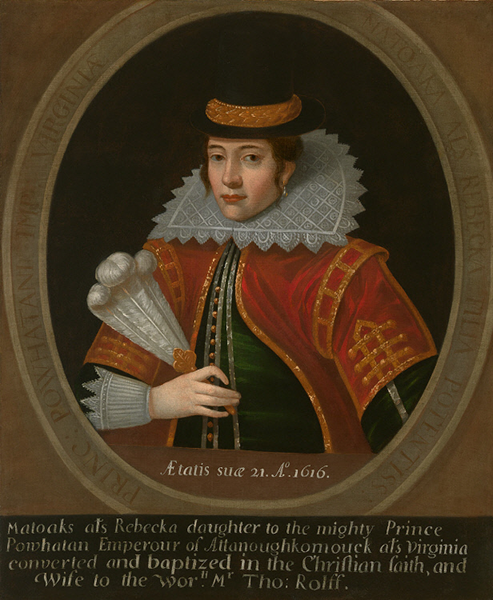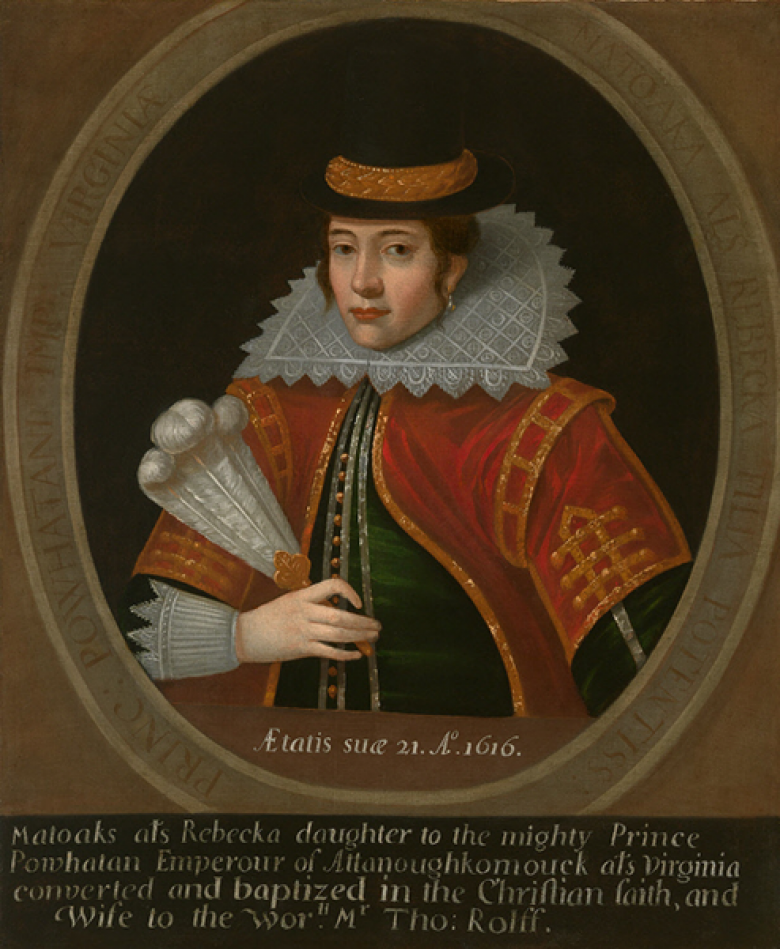21st March 2018
401 years ago today, Pocahontas was buried in Gravesend, England. She was only around 21 years old when she became ill and died, and the exact cause of her death is unknown.
Much has been written about Pocahontas over the centuries, and it’s important to remember that it has mostly been written by the English colonists. We know little about her own thoughts and feelings, and many aspects of her life are disputed. She is infamous for supposedly saving the life of the Englishman John Smith, pleading with her own people to spare him. It is also said that she helped the struggling colonists when they were starving, becoming a symbol of a short-lived peace between the Jamestown colony and the Native Americans.
After the colony expanded and conflict broke out, Pocahontas was captured and held for ransom. As the daughter of the Chief Powhatan, the English knew she was an important prisoner. But Powhatan failed to satisfy the English demands, and Pocahontas was kept captive. During this time she converted to Christianity and was baptised and renamed Rebecca. Whilst in captivity, she met John Rolfe, who she would marry when she was seventeen. This marriage brought about another temporary peace.
Pocahontas, now known as Rebecca Rolfe, was brought to England, and was seen as a symbol of the success of the Jamestown colony. Her conversion to Christianity and marriage to an Englishman gave her value as a propaganda tool to attract new settlers and investments in the colonies. She met many notable people, had her portrait painted, and was presented at court. She had boarded a ship to return to Virginia when she took ill, dying shortly after, when her son was only two years old.
The exact location of her grave has been lost after the church where she was buried was destroyed in a fire. But in the gardens of the rebuilt church, there is a statue of Pocahontas that mirrors another one in Jamestown.
Image: Pocahontas (Rebecca Rolfe), by unknown artist, after 1616, National Portrait Gallery, Smithsonian Institution; transfer from the National Gallery of Art; gift of the A.W. Mellon Educational and Charitable Trust, 1942

